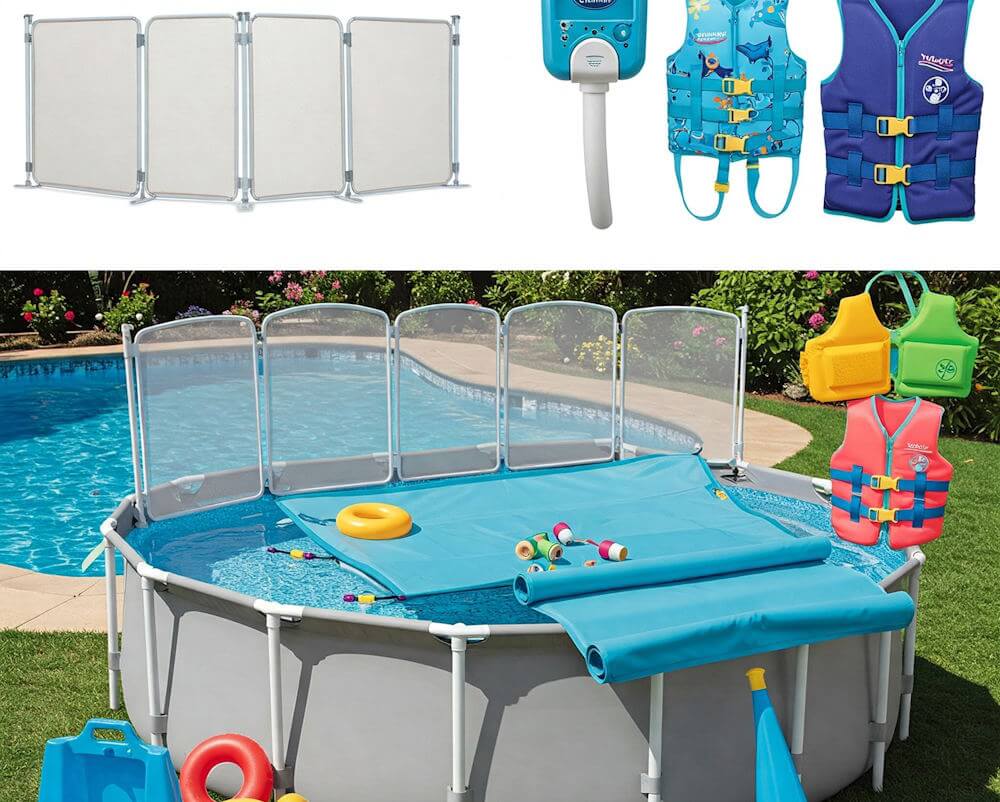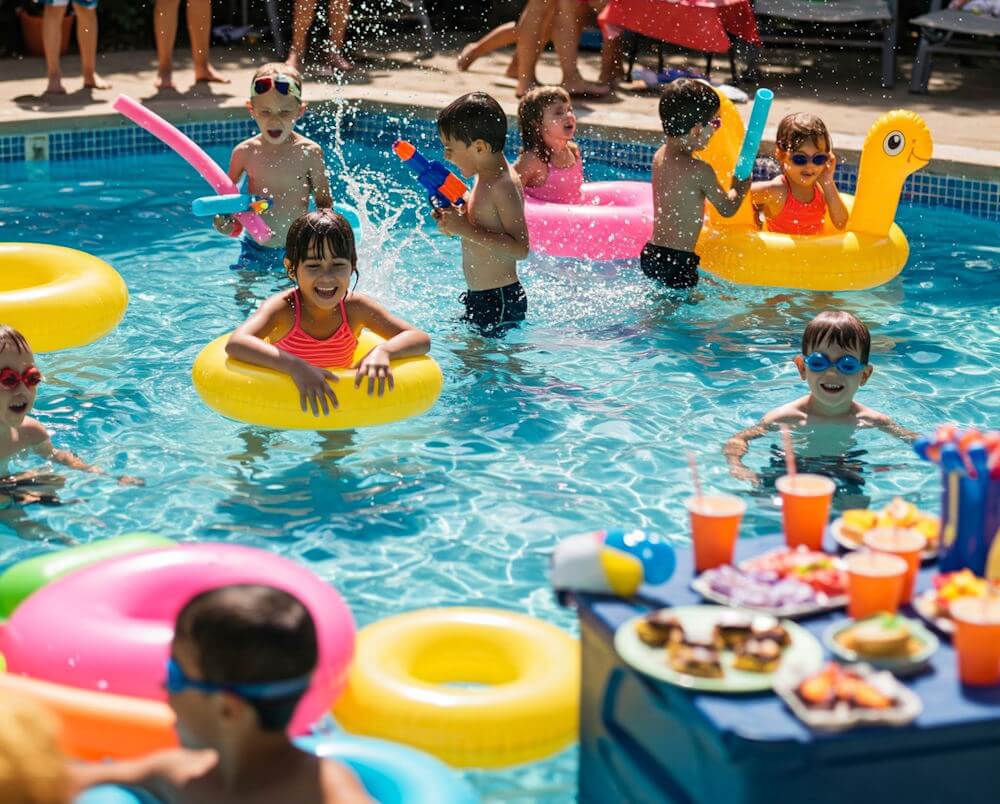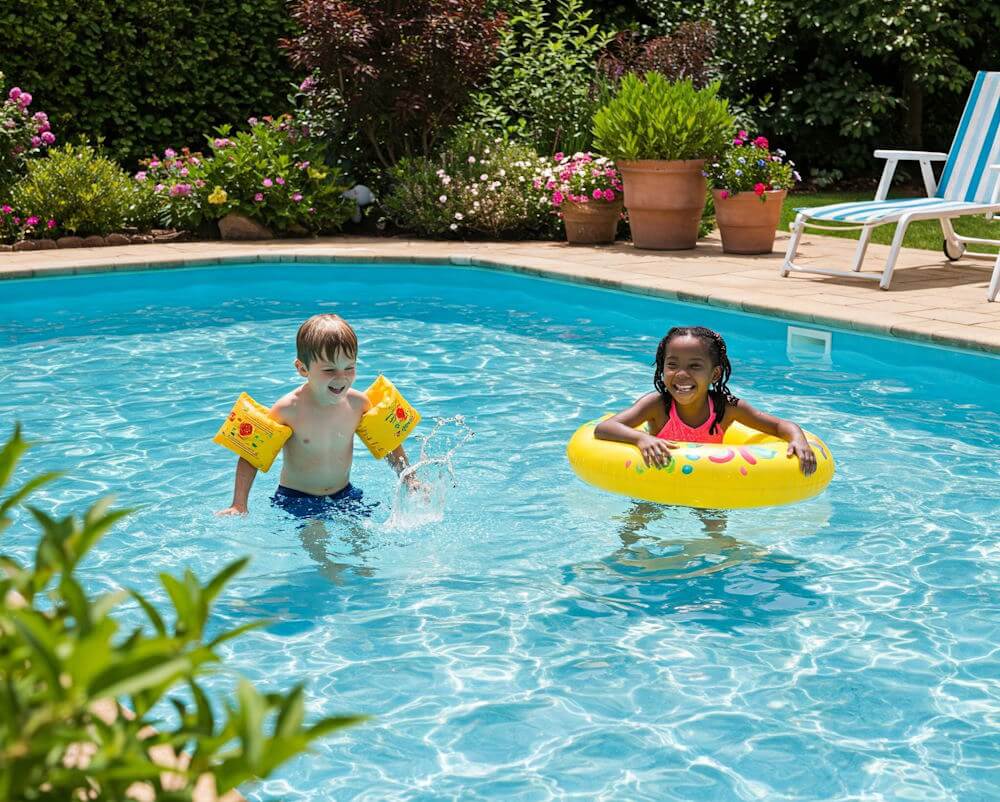Introduction to Pool Safety for Children
Ensuring the safety of children around pools is a critical aspect of responsible parenting and community management. With the increasing popularity of home and community pools, the need for effective pool safety measures has never been more essential. According to statistics, drowning is one of the leading causes of accidental death among children aged one to four. This makes it imperative for parents and guardians to take proactive steps in creating a safe aquatic environment.
Supervision is the most vital aspect of pool safety. Children are naturally curious and may not fully comprehend the dangers associated with water. Constant vigilance by an adult can significantly reduce the risk of drowning or accidents. This supervision should extend beyond mere presence; adults should be actively engaged and ready to respond to any emergencies that may arise.
In addition to supervision, awareness of potential hazards is crucial. Many factors can contribute to pool-related incidents, including slippery surfaces, exceeding pool capacity, and inadequate barriers. Educating children about these risks plays a significant role in their ability to navigate pool environments safely. They should be made aware of the importance of rules, such as no running near the pool or diving in shallow water, which can prevent many hazardous situations.
Utilizing appropriate safety gear is another integral part of safeguarding children around pools. Items such as flotation devices, safety nets, and pool alarms can provide an added layer of protection. These tools are designed to enhance supervision and awareness, ensuring that children are both safe and secure while enjoying their time in the water. By combining active supervision, hazard awareness, and the use of safety gear, the chances of incidents can be considerably diminished, leading to a more enjoyable and secure pool experience for children.
Types of Pool Safety Gear
Ensuring the safety of children around swimming pools is of paramount importance, and utilizing the appropriate safety gear can significantly reduce the risk of accidents. Various types of pool safety gear designed specifically for children enhance protection and encourage safe practices in and around water environments.
One of the most common safety gear options is personal flotation devices (PFDs). These include life jackets, vests, and armbands that provide buoyancy to help keep children afloat. When selecting PFDs, it is essential to choose those that are US Coast Guard approved and appropriate for the child’s weight and age. Proper fit is crucial, as loose or ill-fitting devices may not provide adequate protection.
Another important safety component is pool alarms, which alert parents or caregivers when someone enters the water. These can be installed on doors leading to the pool area or directly on the pool itself. Various models are available, offering features such as immersion detection, sound alerts, and even mobile notifications to enhance monitoring capabilities.
Safety barriers, including pool fences and gates, serve as physical deterrents to prevent unauthorized access to the pool. A well-constructed barrier should be at least four feet high, have self-closing gates, and be made from durable materials to withstand environmental conditions. Installing a safety barrier can significantly reduce the risk of unsupervised access, particularly for younger children.
Finally, swim aids such as floatation rings, kickboards, and swim fins are excellent tools for teaching children how to swim while ensuring their safety. These aids help build confidence in the water and improve swimming skills. However, it is vital that they are used under adult supervision, as they are not substitutes for PFDs.
In summary, a combination of personal flotation devices, pool alarms, safety barriers, and swim aids is essential for creating a safe environment for children in swimming pool settings. Implementing these various safety gear options can greatly enhance the well-being of young swimmers and provide peace of mind for their guardians.
Personal Flotation Devices (PFDs)
Personal Flotation Devices (PFDs), commonly referred to as life jackets or swim vests, play a crucial role in enhancing the safety of children in and around pools. These devices are designed to provide buoyancy, keeping young swimmers afloat and reducing the risk of drowning. Selecting the appropriate PFD requires careful consideration of factors such as the child’s age, weight, and swimming ability, ensuring that it meets safety standards established by organizations such as the U.S. Coast Guard.
When choosing a PFD, parents should look for options that are specifically designed for their child’s age group, since these devices come in various sizes to accommodate different weights and heights. For infants and very young children, flotation devices with additional head support and higher buoyancy levels are recommended, while older children who are more adept at swimming might opt for vests that allow for greater freedom of movement. It’s essential to verify that any PFD purchased is approved for use in pools, as there are certain designs better suited for other water activities.
Fit is another critical aspect when selecting a PFD. A properly fitting life jacket should be snug but not overly tight, allowing for comfortable movement without compromising safety. To test fit, parents should follow guidelines: the device should secure firmly over the shoulders, with minimal lifting when the child raises their arms. Furthermore, it should not allow for the child to slip out easily in case of emergency; using the “two-finger” test can be useful for checking this aspect. The right level of buoyancy, often indicated on the device, will provide the necessary support, ensuring the child remains safe while enjoying pool activities.
Barriers and Fencing
One of the most vital components of pool safety for children is the implementation of effective barriers, specifically designed fences and gates. These physical barriers serve as the first line of defense against accidental drownings, significantly reducing the risk of unsupervised access to the water. When selecting a pool fence, it’s essential to consider several vital factors, ensuring a secure environment for children.
First and foremost, the height of the fence is crucial. A minimum height of four feet is recommended by safety experts, as this discourages young children from attempting to climb over. Additionally, the fence should have no footholds or handholds that could assist a child in scaling it. The construction material should be durable, ensuring that it can withstand the elements as well as potential attempts at tampering. Various materials are available, including reinforced aluminum or vinyl, both providing a long-lasting solution with minimal maintenance.
Furthermore, the installation of self-closing and self-latching gates is paramount. These gates should swing away from the pool and have a latch that is out of reach of children, ideally at least 54 inches high. This feature ensures that even if a child manages to open the gate, they cannot easily gain access to the pool area without adult assistance. Regular maintenance and inspections of both the fence and gate mechanisms are essential, as wear and tear can compromise their effectiveness. A thorough check should be performed at least twice a year to identify any damage that needs repair.
In conclusion, barriers and fencing are critical components in any pool safety strategy. By ensuring proper installation and maintenance of these physical barriers, caregivers can significantly reduce the risk of drowning incidents, creating a safer swimming environment for children. Establishing these safety standards not only protects young swimmers but also provides peace of mind for parents and guardians.
Pool Alarms and Safety Systems
Pool alarms and safety systems are essential components of child safety around swimming pools. These innovative technologies provide an additional layer of protection, alerting parents and guardians when a child enters the pool area unexpectedly. Various types of pool alarms are available, each designed with unique features and functionalities to suit different needs.
Among the most common options are surface wave alarms, which detect disturbances on the water’s surface, and subsurface alarms that monitor movements below the surface. Surface wave alarms are particularly effective in signaling when a child or a pet falls into the pool, ensuring prompt action can be taken. Conversely, subsurface alarms are adept at detecting any unusual activity beneath the water, offering comprehensive monitoring for added peace of mind. Additionally, some advanced systems combine both technologies to maximize safety efficacy.
Another important category of safety systems includes door and gate alarms, which alert homeowners when an entry point to the pool area is opened. These alarms are crucial for preventing unauthorized access and ensuring that children are under supervision. Furthermore, integration of these systems with home security systems can provide parents with round-the-clock monitoring, even when they are away from home.
It is important to remember that while pool alarms are a significant step toward enhancing safety, they should not replace traditional safety gear such as fencing and personal supervision. Using pool alarms in conjunction with these measures creates a holistic safety approach that can significantly reduce the risk of accidents. Combining technology with traditional safety protocols guarantees that parents have all available tools for protecting their children near swimming pools. Having a multifaceted safety strategy is crucial for ensuring the well-being of children around water bodies.
Swim Aids and Training Tools
Swim aids and training tools are essential components for ensuring the safety and confidence of children in pools. These aids, which include floaties, kickboards, and swim rings, serve as helpful resources to assist children as they learn to navigate the water environment. The primary purpose of these swim aids is to provide buoyancy and support, allowing children to develop their swimming skills in a safe manner.
Floaties, or inflatable arm bands, are popular choices among parents for younger children. They are designed to keep the child afloat while boosting their confidence in the water. However, it is crucial to emphasize that while floaties provide a sense of security, they are not a substitute for adult supervision. Parents and guardians should always monitor children closely when they are in or around water, as relying solely on floaties can create a false sense of security.
Kickboards, on the other hand, are perfect for older children who are looking to improve their swimming technique. They allow swimmers to focus on their kick while providing stability. As children practice with kickboards, they enhance their strength and coordination, which are vital components of effective swimming. It is important that these tools are used appropriately and not as a means to neglect the fundamental aspect of adult supervision.
Swim rings can also play a significant role in a child’s water experience. They offer balance and can provide a fun way for children to enjoy the water while building their confidence. As with all swim aids, the responsibility of using these tools correctly falls primarily on parents. Educating children on the importance of using swim aids in conjunction with adult supervision is essential for instilling safe practices around pools.
Supervision: The Best Safety Gear
When it comes to ensuring safety in children’s pools, no equipment can substitute for vigilant adult supervision. While various safety gear, such as floatation devices and pool barriers, plays a vital role in minimizing risks, attentive adult monitoring remains the foremost line of defense. Parents and caregivers must recognize that the presence of a responsible adult can dramatically enhance the safety of children swimming.
Best practices for monitoring children while they swim should be adopted to create a safe environment. Adults should maintain a constant visual and auditory awareness of all children in the pool, avoiding distractions such as mobile phones or conversations that can divert attention. Designating a “water watcher” is a helpful strategy; this individual is responsible solely for supervising the children in the pool. It can be helpful to rotate this responsibility among adults during a swimming session to ensure that everyone remains alert and engaged.
Teaching children about water safety is equally essential. Coaching them on basic swimming skills and the importance of listening to safety instructions fosters independence and responsibility. Encourage them to respect pool boundaries and inform them about the significance of notifying an adult if they notice a peer in distress. This proactive approach not only emphasizes the importance of safety but also instills confidence in their abilities around water.
Furthermore, it is critical for adults to recognize the limitations of safety gear. Floatation devices are not meant to be a replacement for careful supervision but rather serve as supplementary tools. By prioritizing active supervision and teaching children self-awareness, the risk of accidents in the pool can be substantially reduced, leading to a safer and more enjoyable environment for all.
Regular Maintenance of Safety Gear
Ensuring the safety of children in pool environments extends beyond the initial acquisition of safety gear; it is equally vital to maintain and inspect this equipment regularly. Regular maintenance of safety gear plays a crucial role in preserving its functionality and effectiveness. Over time, even the most reliable safety equipment can be subject to wear and tear, which can compromise safety standards.
Regular inspections should include checking for any visible damage such as fraying straps, cracks in floatation devices, or rust on metal components. A thorough inspection performed before each swimming season or prior to high-usage periods will facilitate early detection of issues that could pose serious safety risks. It is advisable to create a checklist that outlines specific areas to examine, ensuring that no detail is overlooked during inspections.
Cleaning practices are also essential for maintaining safety gear. Many items, such as life jackets and pool covers, require specific cleaning methods depending on the materials used. It is recommended to follow the manufacturer’s guidelines for cleaning, which may include using mild detergents and avoiding harsh chemicals that can degrade materials over time. Proper storage following cleaning enhances the longevity of the safety gear and keeps it in optimal condition for use. Additionally, perishable items like pool safety nets should be stored in protected environments to prevent deterioration due to environmental factors.
Furthermore, there are instances when safety gear needs to be replaced rather than repaired. Guidelines on replacement can often be found in product manuals and should be adhered to closely. If safety equipment shows significant signs of damage or if certain components do not function correctly after maintenance, it is crucial to invest in a replacement immediately. By following these maintenance tips, pool owners can uphold maximum safety, ensuring a secure environment for children to enjoy the water.
Conclusion and Key Takeaways
Ensuring the safety of children while they enjoy the water is of utmost importance for every parent. Throughout this blog post, we have discussed several essential items of safety gear for children’s pools that can significantly reduce the risk of accidents and drowning. These items are not merely accessories; they are vital components of maintaining a secure pool environment for young swimmers.
Key items highlighted include properly fitted life jackets, which provide buoyancy and security for children who may not yet be strong swimmers. Additionally, pool floats designed for safety, such as inflatable armbands and swim rings, can offer both fun and support as children gain confidence in the water. Moreover, non-slip pool decking and protective barriers are critical elements that prevent slips and unauthorized access to the pool area, helping to create a safe swimming environment.
Another cornerstone of pool safety is vigilant supervision. No gadget can replace the watchful eye of an adult. It is essential for parents and guardians to maintain active supervision whenever children are near the water. This not only ensures that children are safe but also allows adults to respond quickly in case of any emergencies.
Incorporating these safety measures into your pool routine can help create a joyful and secure experience for children. Each of the discussed items serves as an integral part of a comprehensive safety strategy that parents should prioritize. By making pool safety a continuous focus, we can significantly minimize risks and allow children to explore aquatic activities with confidence.
In summary, having the right safety gear, maintaining vigilant supervision, and fostering an overall culture of safety can lead to enjoyable and worry-free pool experiences for children. Prioritizing these practices will ensure that pool time remains fun while safeguarding our children’s well-being.



